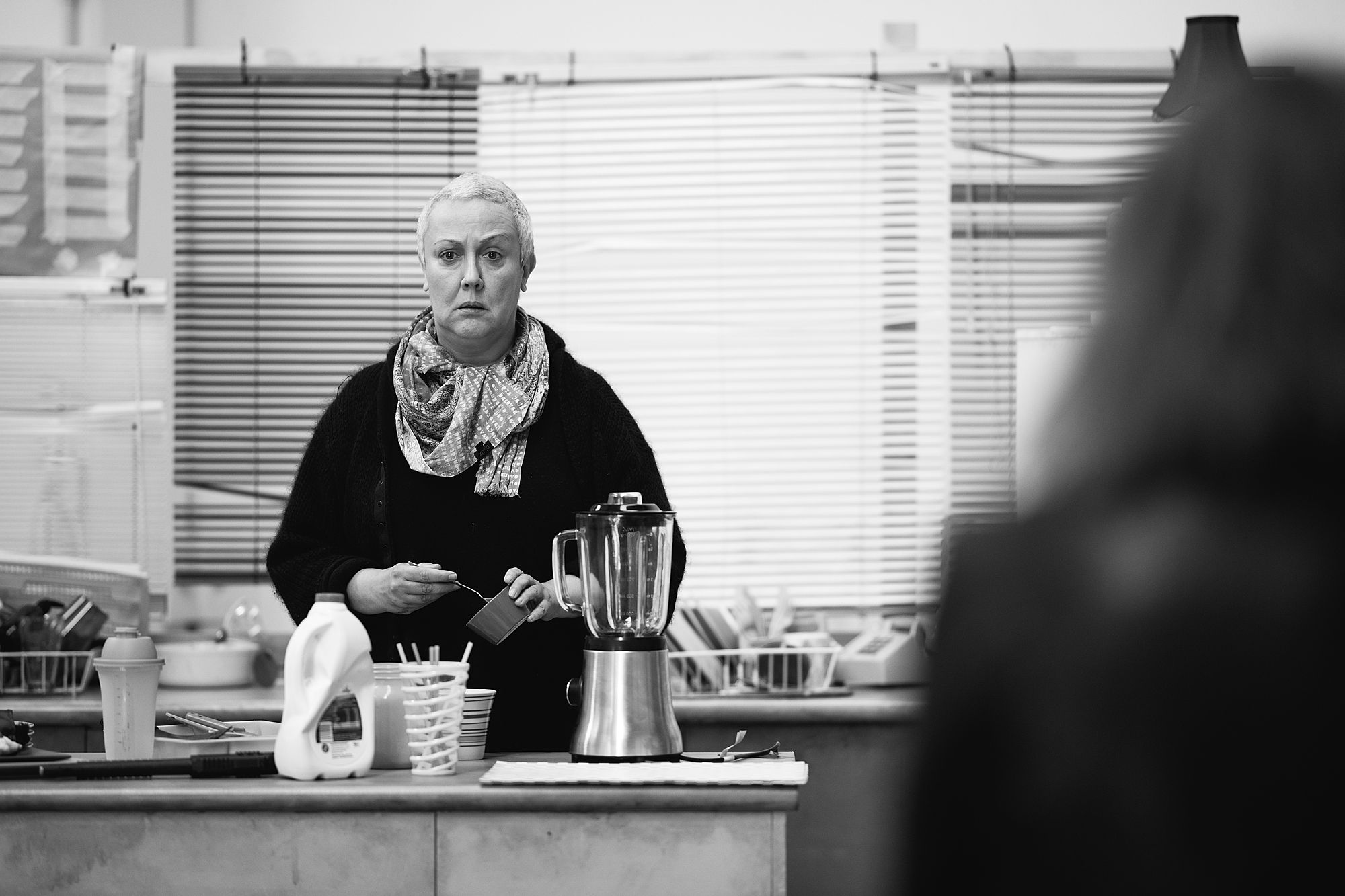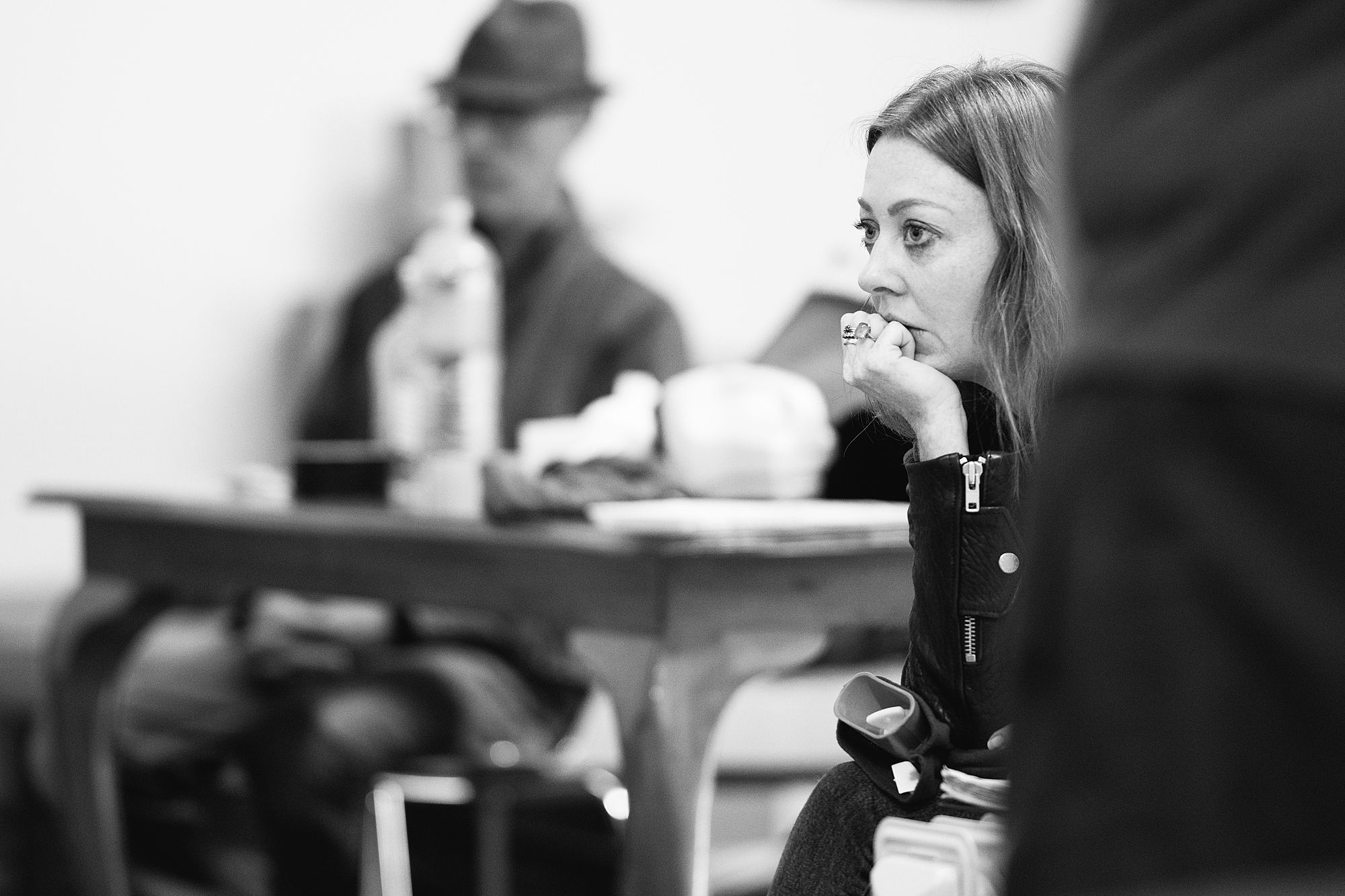Mundane Hellscapes: The Subversion of Hir
Jean Sergent dives into the disruption of Taylor Mac's Hir.
This week Silo Theatre opens Taylor Mac's explosive play, Hir. In this programme essay, Jean Sergent dives into its disruption.
I’ve probably seen The Rocky Horror Picture Show more than any other film. Richard O’Brien’s 70s musical is considered by the wokest of young people to be pretty problematic nowadays, like LGBT+ cosplay for cis straight people. I have compassion for that view, but for older generations, The Rocky Horror Picture Show was a gateway into worlds of gender-fuckery and non-normative expression that barely existed in popular culture when it came out. I think I first saw it in 1990 when I was six, although there’s every chance I watched it earlier than that. Rocky Horror gave tiny queer me sexually fluid characters before I knew that rigid sexuality was even a thing, and joyous gender-bending before I was fully aware of gender norms.
Rocky Horror was created by a nonbinary person who grew up in Hamilton. It was made at a time when gender play was a flirtatious part of alternative culture, but when trans and nonbinary people were still figures of fun or revulsion. Concealing serious identity politics with pantomime excesses is one of the ways that queer artists express their worldviews and experiences, filling their works with reflections of their environments, their upbringings, their inner turmoils and their outer extravagances.
What Rocky Horror did was promote minority voices and identities by slipping in through the side door of popular culture and becoming one of the well-loved musicals of all time. Taylor Mac’s Hir does the same thing. What starts off with a familiar premise of heterosexual mundanity and life in the suburban, nuclear hellscape of Everytown USA, becomes a rollercoaster ride through new identity discourses.
Taylor Mac (who uses lowercase "judy" not as a name but as a pronoun) is a performance artist and writer who is bringing judy's unique and subversive experiences and perspectives to the theatre. Mac’s A 24-Decade History Of Popular Music tells the story of the USA through its musical shifts and developments, performed by Mac as an ostentatiously attired drag queen. It’s 24 hours long. Mac isn’t pulling any punches, and judy’s doing it backwards in high heels.
While most audiences would know Taylor Mac as a performer and not as a playwright of four-hander kitchen-sink dramas, Hir is not Mac’s first play. Yet this remarkable family drama is fast becoming the work that is making Mac’s name internationally. Mac, the child of a Vietnam veteran, uses Hir as a vessel to play in the dirt of the USA’s conservatism and make mud pies out of that swiftly crumbling country.
Mac uses Hir as a vessel to play in the dirt of the USA’s conservatism and make mud pies out of that swiftly crumbling country
Hir is a family drama, replete with the requisite nuclear nucleus: mother, father, 2.5 children. The parents hate each other, because that’s what straight couples do in family dramas. The two children fit neatly into the expected norms of the nuclear dramatic: one is the prodigal son, the other the wayward youth. However in Hir the roles are subverted and twisted into a new paradigm where the prodigal is returning a shell of his former self, and the wayward has become the household’s revolutionary leader.
One of the ways that minority artists subvert mainstream genres is by taking familiar character tropes and corrupting them. Each of the characters in Hir both lives up to, and disrupts, their archetype. Not a detail is out of place, nor an opportunity passed up by Mac’s keenly honed eye for irony.
Max, our gender revolutionary, and the titular hir, is the sanest, most functional member of the family sect. Everything about Max normalises new gender paradigms and discourses because Max, like every other teenager on the planet, has cast-iron opinions and thinks everyone else is a bit stupid. In fact, Max is, well, kind of annoying. That’s the playwright’s real subversion with this character – Max isn’t remarkable because Max is an outspoken trans person, Max is annoying and outspoken because Max is a teenager.
Arnold, the patriarch, is the revenge symbol that mothers and wives in mainstream drama all deserve. He is the shadow of the former abuser, now bereft by nature and by sabotage of any of his power; the sad old decrepit creature that comes from years of alcoholism, finally a victim of his own tyranny. Tennessee Williams’ Stanley could meet the same fate in A Streetcar Revisited. Mother Paige’s treatment of Arnold gives Hir a body-horror edge. A dichotomy is set up between hormonal enhancement and hormonal poisoning, setting Max and Arnold into opposition as the balance of masculine power shifts in the family.
And poor Isaac, the prodigal returning from the front with PTSD, exchanging the battlefield for the warzone of the family home and trading landmines for the chaos of change. Isaac is our audience proxy for about five seconds, before he’s plunged into the horror story that his family life has become.
For many audiences, the most immediately fascinating character will be the mother, Paige. In the dramatic tradition of Medea, Paige takes revenge on her children for what her husband has done to her: making their living environment openly hostile to protect herself from others; and physically abusing her husband in order to maintain control over the family. She has a kind of factitious disorder/Munchausen by proxy, keeping a family member hostage with an invented sickness, relishing in the power and attention that she receives. Paige has learnt a few tricks to control her surroundings and she is wielding them like weapons: the filth, the pills, the water pistol, the discourse. But Paige is also the sad hysteric, she’s Edward Albee’s Martha (Who’s Afraid of Virginia Woolf) throwing a dinner party just so she can ruin everyone’s night. She wants to be loved and cared for and respected, but she never has been, so she is doing the only thing she knows how to do: burning the world to the ground.
She is doing the only thing she knows how to do: burning the world to the ground
Hir is a modern American classic that knowingly and exquisitely corrupts popular genres in the 20th century tradition. It blends and bends the tropes of establishment playwrights like Edward Albee, August Wilson, Tracy Letts, Tennessee Williams and Arthur Miller. It’s masculine, it’s misogynistic, and it’s mundanely domestic. Hir sets a trap for its audience by luring it into the space of the well-made play, and then bashing against the fourth wall until the earth shakes and the boundaries between spectacle and spectator are blurred beyond comprehension. It's a triumph of subversion that injects the trash of a John Waters film into the conventional wisdom/war-cry of God Bless America.
In so many ways the play is basic, formulaic, predictable. However it assaults the witness with the pure filth of its analysis of the nuclear family. It has the blood-and-guts attitude of Titus Andronicus, with the stretched, strung-out tension of Barbara telling her mother to “Eat the fish, bitch!” in August, Osage County. All of the stereotypes and expectations that Hir utilises are subverted so that they relentlessly punch the audience in the gut.
Integrating new gender identities into a classic genre structure is a key device for postmodern artists exploring newly liberated worldviews in their work. Integration and inclusivity in society relies on exposure to diversity in our cultural diets. This is true across the spectrums and intersections of gender, skin colour, body size and disabilities. If you're not seeing trans people in media, then you're not seeing trans people in the world without viewing them as non-normative. They become novelty items that are acceptable for hetero- and cisnormative audiences to interrogate without humanity. This is one way in which The Rocky Horror Picture Show seems a bit old hat to younger audiences, because the gender and sexual representations in that film are so extreme they verge on inhuman. After all, the gender-bending queer characters are literally aliens. What was so formative for me in a time of scarce popular queer representation becomes tired – ideas move on.
In 2018, Hir shows a trans person in all their mundane, multi-faceted glory. Queer people are everywhere in the arts, but our representation is extremely one-note and formulaic: if you’re a pretty boy queer then you’re flamboyant and shallow; if you’re an older queer man you’re bitter and persecuted; if you’re trans you’re a tortured drug addict; if you’re a lesbian you’re a side-show for the male gaze; and if you’re bisexual you’re probably a murderer. Where are the boring queers? Where’s a queer as desperately dull as Willy Loman?
Queer artists have always been here, playing straight roles and sexless character parts, but that isn’t representation. To see yourself on screen or onstage or on the wall in a gallery is to feel included. We should all expose ourselves to more art by, and for, trans people, queer people, people of colour. We will see all the things about storytelling that are familiar to us, but as if through a kaleidoscope. Subverting norms and repackaging recognisable features is at the core of postmodern art and culture. Seeing and experiencing new paradigms and identities on stage reorients our values, and reminds us why theatre is so powerful. For audiences lucky enough to experience its kaleidoscopic hellscape, Hir does all of these things backwards, in high-heels, and with a shit-eating grin.
Hir runs from 2-25 August at the Herald Theatre. Tickets available here.
This piece is presented as part of a partnership with Silo Theatre and appears in the show programme. Silo cover the costs of paying our writers while we retain all editorial control.






